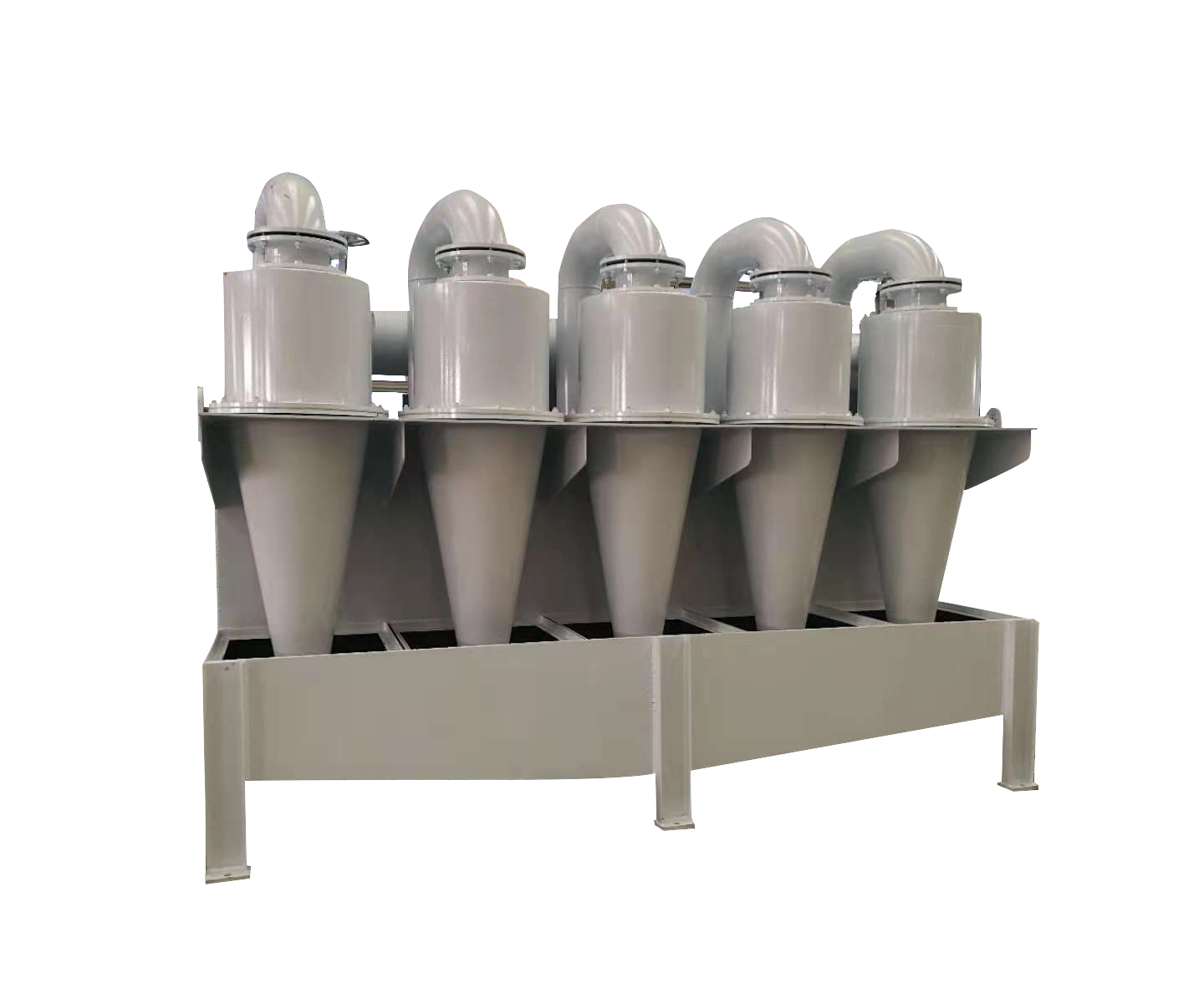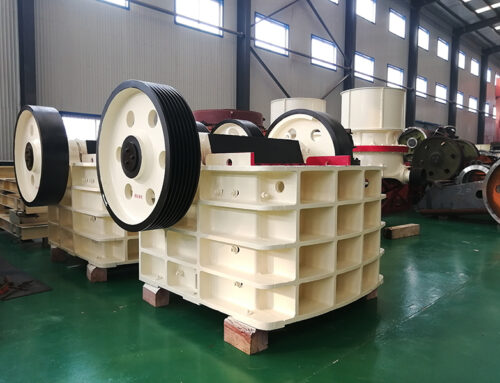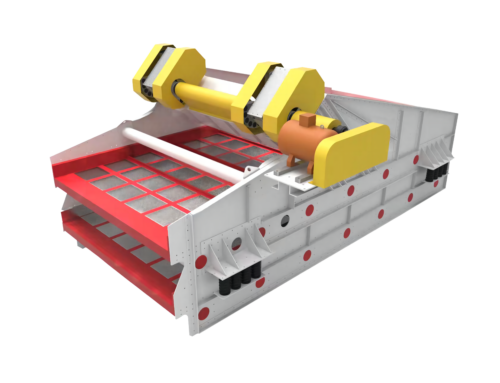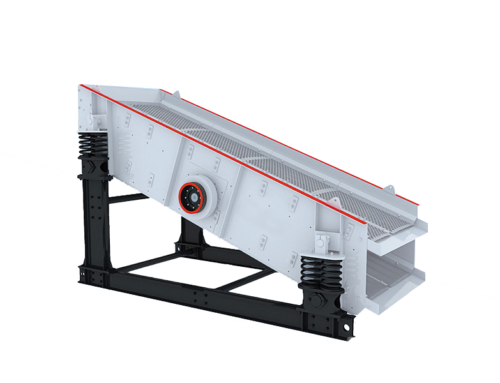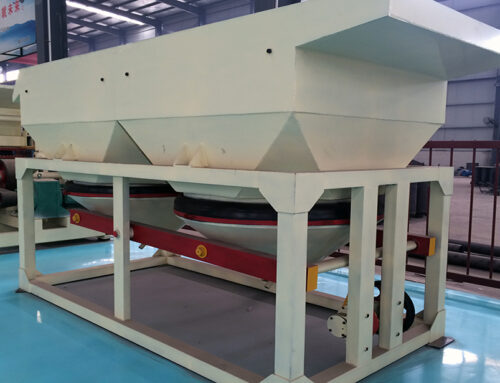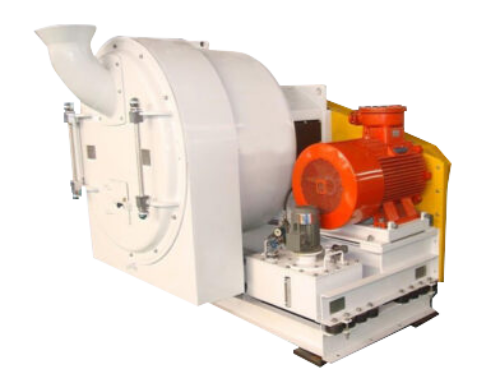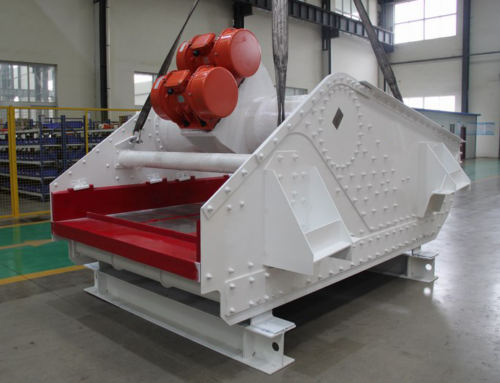Hydrocyclone is an effective fine grading equipment in current mineral processing equipment. In daily production, hydrocyclone will more or less appear some problems, if not found and solved in time, it is likely to lead to hydrocyclone stop running. So, what are the common problems of hydrocyclone in daily operation? And how to solve these problems? Below, we will analyse the causes and countermeasures.
Factors affecting the efficiency of hydrocyclones
Classification operations often form a closed cycle with the grinding operation, and therefore have an important influence on the grinding. Because of the need to dissociate the fine useful minerals from the vein minerals, it is necessary to grind the ore to a certain size before sorting. In order to avoid excessive crushing and sludge on the sorting process has a negative impact on the need for milling products for classification, will meet the requirements of the separation of the ore particles sent to the next level of processing, while unqualified ore particles will be returned to the mill to regrind the ore. Classification equipment commonly used in mineral processing equipment can be divided into mechanical classifier and hydrocyclone. In the production process, there are many factors that affect the classification efficiency, the following will give you an introduction to the two factors that affect the efficiency of hydrocyclone.
1.Structural factors of hydrocyclones
(1) Cyclone diameter: It mainly affects the processing capacity and classification size of the cyclone. The larger the diameter, the greater the capacity of the cyclone, the grading particle size becomes coarse. Therefore, fine grading desliming can choose 125mm diameter cyclone. When grading coarse ore particles, a larger diameter cyclone can be used.
Cyclone inlet size: mainly affects the classification efficiency, and the cyclone diameter into a certain proportion. Generally, the ratio of the diameter of the inlet and the diameter of the cyclone in the 0.18 ~ 0.2mm between the more appropriate. More than this range, the capacity of the cyclone can be increased, but the overflow particles will be coarser, and the cyclone efficiency will also decline.
(3) The size of the sedimentation port and overflow port: mainly affects the processing capacity of the cyclone, grading efficiency and grading particle size. Small sand sedimentation mouth, the amount of sand is less, the amount of ore discharge is less; sand sedimentation mouth, on the contrary. The overflow mouth of the cyclone becomes small, its processing capacity also decreases, and the overflow particle size becomes fine; the overflow mouth becomes large, the processing capacity of the cyclone becomes large, and the overflow particle size becomes coarse.
(4) Cylinder height and cone angle size: mainly affects the grading efficiency and grading size of the equipment. Cylinder higher or cone angle is smaller, the cyclone grading particle size becomes fine, the efficiency increases accordingly. Therefore, the higher cylinder, cone angle smaller cyclone for fine particles of classification desliming.
Overflow tube insertion depth: mainly affects the grading efficiency and grading particle size of the equipment. Overflow pipe insertion depth is too deep or too shallow will affect the grading efficiency of the equipment. Generally lower than the feeding surface and the lower edge of the cylinder.
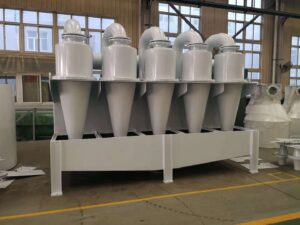
2.Factors related to the nature of the ore
(1) Feed particle size: mainly affects the classification efficiency. Under other conditions, if the feed size is coarse, the number of coarse particles in the overflow increases, the concentration of sand increases, and the grading efficiency of the cyclone decreases. To solve this problem, you can choose to use a small diameter cyclone or increase the feed pressure to improve the efficiency of the equipment.
(2) Feed concentration and viscosity: mainly affect the grading efficiency and particle size. With the increase of feed concentration, the concentration of overflow and sediment slurry also increases, the equipment processing capacity also increases, and the overflow particle size will become coarse. If the feed viscosity is large, the overflow particle size will also become coarse, and the classification efficiency will be reduced.
(3) Feed pressure: mainly affects the working index of the cyclone. With the increase in feed pressure, the equipment processing capacity increases, the overflow slurry becomes fine, and the sedimentation yield and concentration will be increased accordingly. It is worth noting that when the pressure exceeds a certain level, it no longer works. In actual production, in order to avoid affecting the grading efficiency, it should try to ensure that it operates under stable pressure conditions.
The above content is the introduction of the factors affecting the efficiency of hydrocyclone, in actual production, there are many other factors affecting its working index, the use of equipment should fully consider these factors, so as to obtain good separation effect. The application of hydrocyclone in mineral processing plant is very wide, not only can be used for classification, but also can be used for desliming, thickening, separation and other operations, so the correct and reasonable use of the cyclone can further improve the productivity of the whole mineral processing plant, increase economic benefits.
Hydrocyclones have these five problems and the measures to solve them
1.High fluctuation of feed pressure
In the production process, the size of the feed pressure will affect the processing capacity and classification particle size of the cyclone. Usually the feed pressure of the cyclone should be kept stable according to the required pressure, and should not produce large fluctuations, otherwise it will damage the performance of the equipment and affect its classification effect. The reasons for large fluctuations in feed pressure include a drop in the level of the pump tank or the appearance of air traces resulting in insufficient supply of ore to the pump, or clogging of the pump with debris. If the cyclone runs for a long time, the drop in feed pressure is mainly due to the wear and tear of the pump.
Solution:
(1) If the feed pressure fluctuation is caused by a drop in the pump tank level, adjustments can be made by increasing the level, or closing one or two cyclones, or reducing the pump speed.
(2) If the feed pressure fluctuation is caused by clogging or wear of the pump, the pump needs to be repaired.
2.Hydrocyclone clogging
Determine whether the hydrocyclone is clogged, mainly by observing whether the overflow and underflow discharge of the hydrocyclone in operation are smooth. When the overflow contains more coarse particles, the flow rate of the overflow and underflow is reduced, or the underflow is cut off. When sediment is discharged in columns, it indicates that the hydrocyclone is clogged. In addition, if the hydrocyclone appears to shake violently for a long time, it also indicates that the hydrocyclone is clogged.
Solution:
(1) If the overflow and underflow are reduced, the cyclone inlet may be blocked, at which time the cyclone inlet valve should be closed and the blockage removed.
(2) If the bottom flow is found to be reduced or cut off, it indicates that the bottom flow port is blocked, at this time, the flange can be removed to remove the debris in the bottom flow port.
(3) In order to prevent clogging, can be set in the cyclone group feed pool to block the coarse material and debris facilities (such as debris sieve), at the same time, in the stopping of the use of the feed pool should be emptied in a timely manner to avoid driving again, so as to avoid the cyclone restarted due to the sedimentation, concentration is too high to cause clogging.

3.Bottom stream concentration and flow anomalies
During operation, the cyclone operator needs to frequently observe the cyclone underflow discharge state, regularly check the underflow concentration and fineness, such as underflow concentration fluctuations or ‘underflow containing fine particles’, should be adjusted in time. Under normal operating conditions, the cyclone underflow discharge should be ‘umbrella’, if the underflow concentration is too large, the underflow will be ‘column’ or intermittent ‘block’ discharge.
Solution:
(1) The high concentration of underflow may be caused by the high concentration of feed slurry or too small underflow opening. If the concentration of underflow is still high, it is necessary to replace the underflow port with a larger one.
(2) If the bottom flow is ‘umbrella’ discharge, but the concentration of the bottom flow can not reach the production requirements of the concentration, it may be too low concentration of feed caused by this time should improve the concentration of feed.
(3) ‘Bottom flow contains fine particles’ may be due to bottom flow mouth wear, bottom flow calibre is too large, overflow pipe diameter is too small, too high or too low pressure. It is necessary to adjust the pressure first, and then check whether the bottom flow port is worn or replace the larger bottom flow port, and gradually adjust to the normal production state.
4.Abnormal overflow concentration and fineness
In the operation process, cyclone operators also need to regularly check the concentration and fineness of the cyclone overflow liquid, the overflow liquid concentration increases or ‘overflow coarsening’ is generally due to the higher concentration of feed ore, bottom flow clogging caused by.
Solution:
(1) When you find ‘overflow coarsening’, you should check whether the bottom flow port is blocked, and then check the feed concentration, and adjust according to the specific situation, if the bottom flow port is blocked, you should open the bottom flow port to unclog the blockage.
(2) If the overflow concentration is small, the requirement of fine particle size, or can replace the small sand sinking nozzle, can meet the requirements.
5.Spray or rope blasting nozzles
Under normal circumstances, the cyclone slag discharge is umbrella-shaped, slag discharge angle between 10 ° – 20 °, the concentration of up to 75% or so, for the cyclone’s ideal working condition. If the sand blasting nozzle is spray-like, sand blasting angle is large, indicating that the sand blasting nozzle is too large. If the sand blasting nozzle is rope-like, it may be due to the high concentration of feed ore, sand blasting nozzle size is too small, sand blasting nozzle local blockage or slurry concentration is too low and other reasons.
Solution:
(1) When the grit blasting nozzle is spray-like, it can be adjusted by replacing the small grit blasting nozzle;
(2) When the grit nozzle is rope-like, the size of the grit nozzle can be appropriately increased, and the cyclone should be stopped and the blockage should be cleared.
The above is the reason for the common problems of hydrocyclone and countermeasures, want the equipment to run stably and efficiently, in addition to choosing the type of equipment that meets the processing technology, the daily maintenance and repair is also very important. It is recommended to consult professional hydrocyclone manufacturers when purchasing, comprehensively consider the process and equipment of the thickener, and further improve the efficiency and economic benefits of the thickener.

